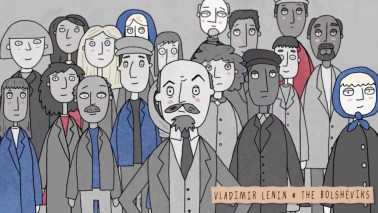When I was young, all the traffic lights in central London had black iron flambeaux, about the size of your forearm, at the top of each pole. I doubt many people even noticed the decoration consciously, but it lent a faintly monumental touch to otherwise utilitarian ironwork – like those magnificent bronze fish wrapped around the streetlights along the Thames Embankment. In however small a way the flambeaux gave our metropolis the air of an imperial city. Ornamentation in the stone of buildings or the steel of street furniture does this: because, and precisely because, it serves no purpose but to beautify or dignify. Because it is (strictly speaking) useless and extravagant, it elevates the scene. It says ‘here dwell a race of men with the time, money and confidence to gild functionality with a little ornamentation. Here lives a civilised people.’
At some point in the 1970s the flambeaux began to vanish. Whether the Greater London Council went around sawing them off, or they were not replaced and so disappeared slowly by natural wastage, I do not know. Does it matter? Hardly, you might say. I don’t remember the change becoming a matter of controversy. I don’t remember anyone even mentioning it. One day — and nobody will know the date — the last flambeau was carted away; and London’s streets were imperceptibly yet (to my mind) signally diminished.
Would I have written a column about it, had I been a columnist then? Perhaps not. People might have called that trivial. We had the USSR, the Vietnam war, many economic woes, strikes, and finally the winter of discontent to worry about. Yet there are things that happen, changes that occur around us, which do impoverish our lives in small but quite significant ways, the loss never quite rising to the level where serious public commentary is thought fitting.








Comments
Join the debate for just £1 a month
Be part of the conversation with other Spectator readers by getting your first three months for £3.
UNLOCK ACCESS Just £1 a monthAlready a subscriber? Log in